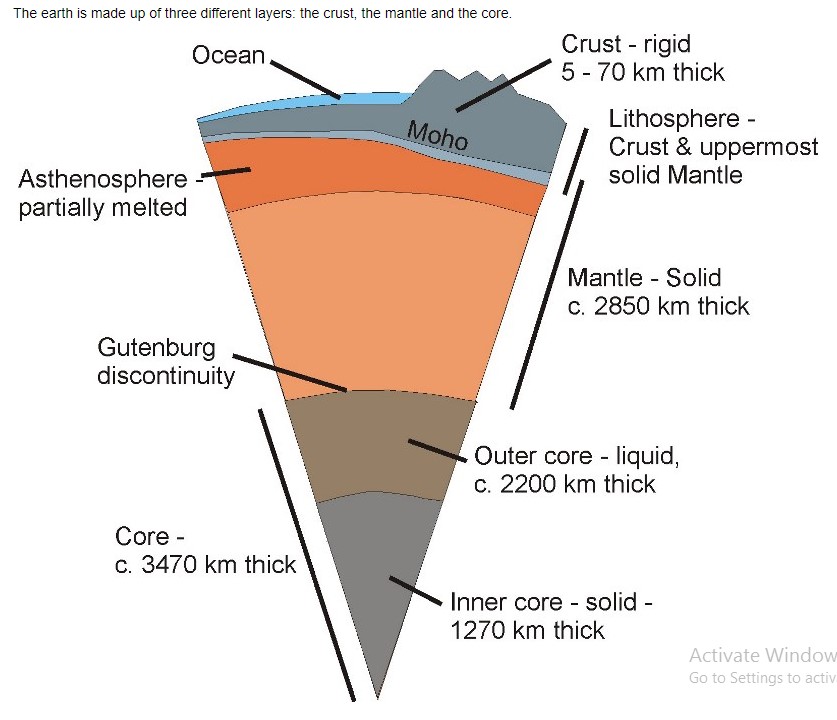Hidden Mantle Layer of Earth
2023 MAR 4
Preliminary >
Geography > Geomorphology > Geomorphology
Why in news?
- According to two new studies, the mantle of the earth has been hiding two new layers.
More about the news:
- The first layer is a low viscosity zone in the upper mantle, approximately 100 kilometres thick, which was discovered by studying deep earthquakes (2018 Fiji earthquake of 8.2 magnitude) using GPS sensors.
- The second layer is a partially molten layer that extends from 90 km to 150 kilometres and sits below the tectonic plates.
- This layer was discovered by analysing seismic waves from earthquakes and suggests a higher temperature.
Structure of the Earth:

- Crust:
- The crust is the outermost solid part of the earth.
- It is fragile.
- The thickness of the crust varies under the oceanic and continental areas.
- Oceanic crust is thinner as compared to the continental crust.
- The continental crust is thicker in the areas of major mountain systems.
- The crust is made up of heavier rocks having a density of 3 g/cm3.
- The kind of rock seen in the oceanic crust is basalt.
- The mean density of material in the oceanic crust is 2.7 g/cm3.
- Silica (Si) and Aluminium (Al) are major constituent minerals. Hence it is often termed as SIAL. Also, sometimes SIAL is used to refer to the Lithosphere.
- Mantle:
- The portion of the interior beyond the crust is called the mantle.
- It is in a solid-state.
- It has a density higher than the crust portion.
- The thickness ranges from 10-200 km.
- The mantle extends from Moho’s discontinuity to a depth of 2,900 km.
- The asthenosphere is the upper portion of Mantle.
- It is the chief source of magma that finds its way to the surface during volcanic eruptions.
- The crust and the uppermost part of the mantle are called the lithosphere.
- The major constituent elements of the mantle are Silicon and Magnesium and hence it is also termed as SIMA
- Core:
- The core-mantle boundary is positioned at the depth of 2,900 km.
- The inner core is in the solid-state whereas the outer core is in the liquid state.
- The core is made up of very heavy material mostly constituted by nickel and iron. Hence it is also called the “nife” layer.
PRACTICE QUESTION:
In the context of structure of earth, consider the following statements:
1. The asthenosphere is the upper portion of Mantle
2. Mantle has a lower density than the crust portion
3. Mantle is made up of very heavy material mostly constituted by nickel and iron
Which of the statements given above is/are correct?
(a) 2 and 3 only
(b) 1 only
(c) 3 only
(d) 1 and 2 only
Answer
